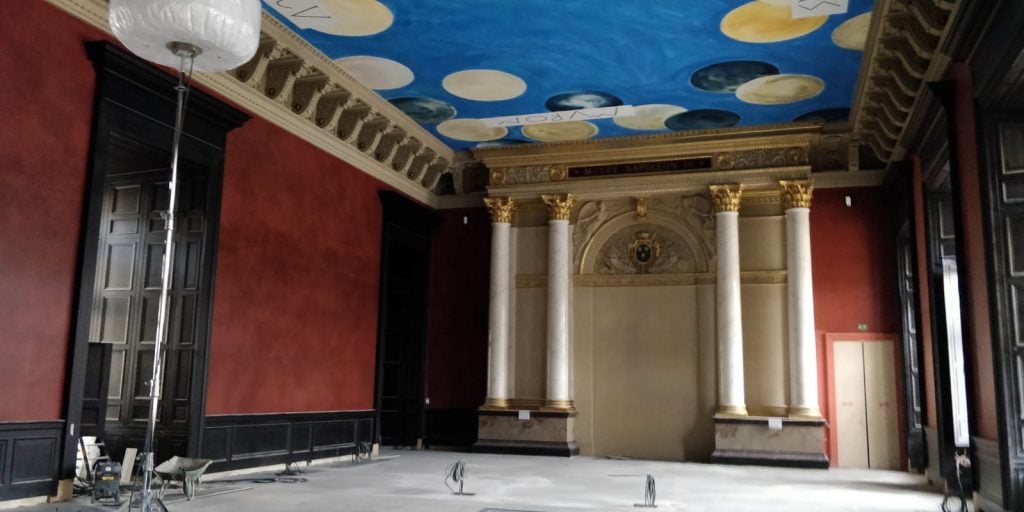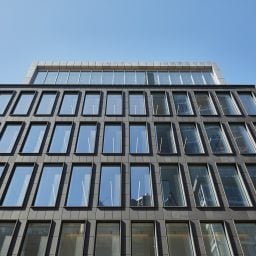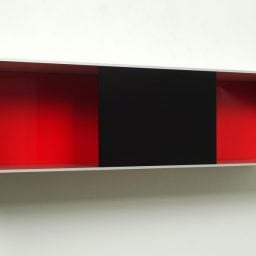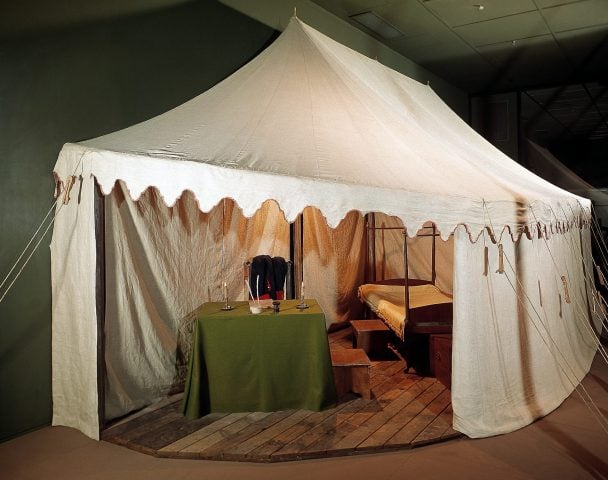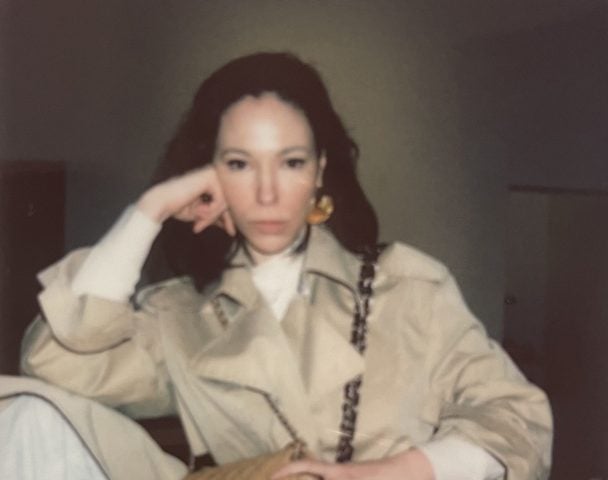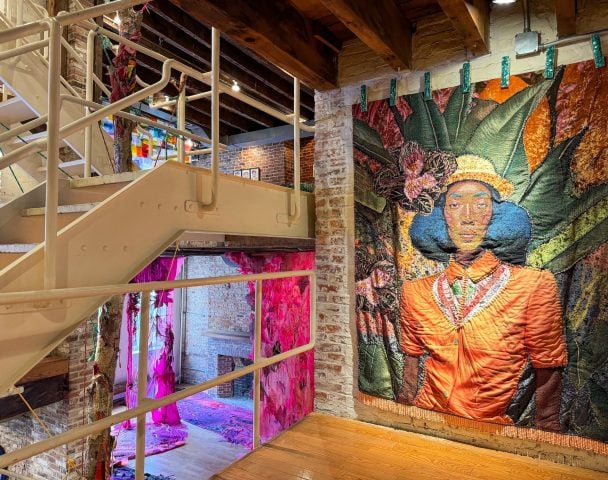The Cy Twombly Foundation is broadening its fight against the Louvre by sailing a lawsuit towards the museum, which the foundation accuses of having compromised a permanent Cy Twombly installation.
The development comes after the museum made substantial changes to a gallery adorned with a vast blue-and-yellow ceiling mural by the late US painter.
The 3,800 square-foot mural is in the Salle des Bronzes, which houses the museum’s collection of Etruscan art. Twombly completed the site-specific work in 2010, painting the ceiling blue to complement the statuary in the room, and peppering it with yellow discs, and the names of ancient Greek sculptors.
But the foundation says the room—which was formerly a neutral pale stucco with limestone flooring, but has since been painted a rusty brown and redesigned with parquet flooring—fundamentally compromises the integrity of the work.
David Baum, a lawyer for the foundation, tells Artnet News the decision to file the lawsuit was a “solemn” one, taken after efforts to resolve the matter “discretely and amicably” drew “no substantive response” from the Louvre.
“The Louvre has only responded to the suit in the press,” he says.
The foundation’s president, Nicola Del Roscio, first found out about the changes through a leaked image of the gallery in February, and wrote to the Louvre’s president, Jean-Luc Martinez, and French culture minister Roselyne Bachelot demanding a reversal to the changes, which he called an “aberration.”
The dispute centers on whether the Louvre violated the artist’s moral rights, which protect the integrity of an artwork. While the museum’s president has made statements suggesting it had every right to redecorate the room, because it considers the ceiling a separate entity, the foundation’s lawyer says this is a “misleading” take.
Two witnesses are supporting the foundation’s lawsuit: former Louvre president Henri Loyrette, who commissioned Twombly to make the installation; and former Louvre curator Marie-Laure Bernadac, who supervised the project and wrote a book about it.
Loyrette says the aim of the project “was to make a permanent statement in an architectural and decorative ensemble, to complete it,” and that “[c]hanging the nature of the floor, and the texture and color of the walls, completely alters its meaning and perception and disfigures it.”
Bernadac added that the work’s title, The Ceiling, implies its relation to the rest of the room.
“The point is that the Louvre and the artist were in complete agreement regarding the nature and integrity of the site-specific installation at the time that it was commissioned and completed,” Baum says. “The foundation appreciates and respects that Martinez may have his own vision for the architecture and decor of other rooms, but the intervention by the artist in this room is a permanent installation, and the work of an artist cannot be redefined and reconfigured to make it something else.”
Baum says the lawsuit requests a reversion to the room’s decor and no further damages.
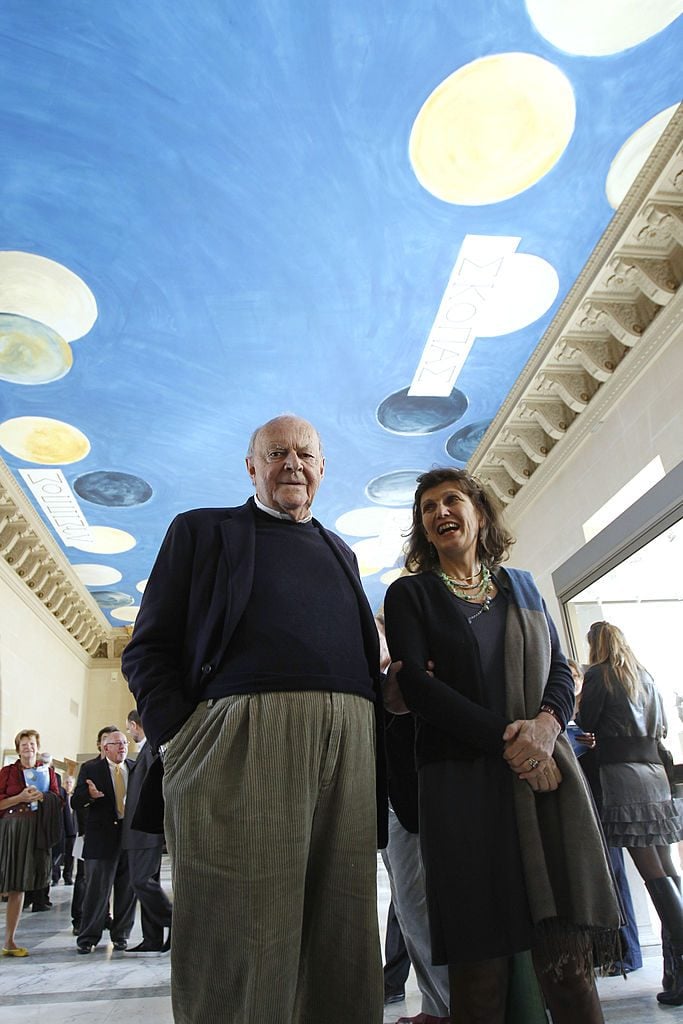
Cy Twombly in the Salle des Bronzes, one of the oldest sections of the Louvre museum, with his painting above. Photo: Francois Guillot/AFP via Getty Images.
Contacted by Artnet News, a Louvre spokesperson said the museum does not intend to reverse the changes, adding that they were in the works for “a long time,” including a two-year period during which France’s chief architect of historical monuments studied the plans, which were subsequently approved by an independent organization, the Historical Monuments Commission.
“The Louvre decides by itself which collections the museum wishes to present and its museography,” the spokesperson said. “In the contract, in the droit moral paragraph, nothing says the artist should have to be consulted for any museography changing of the room. In the introduction of the contract, it is said that the Louvre is a living museum that can change.”
Baum says that if the museum had consulted with the foundation on the changes, it could have avoided the alleged violation of the artist’s moral rights.
The dispute, which unfolds as Martinez draws towards the end of his third term as museum president in April, has prompted speculation that it is part of an effort to thwart the renewal of his position. Martinez himself told the French publication Paris Match: “I note that this dispute arises at the time I am seeking reappointment… What else can I say?”
But Baum disputes that interpretation. “The foundation is disappointed that the museum has attempted to divert and distract the press and the public with a contrived narrative that this lawsuit has anything to do with Martinez’s campaign for a renewal of his position,” he says. He adds that Martinez also stated in that interview that renovations to that section of the museum had been planned since 2008, but given the Twombly project was initiated in 2007, “whatever so-called renovations had been planned for other rooms, there was obviously no plan to change the Salle des Bronzes.”
Follow Artnet News on Facebook:
Want to stay ahead of the art world? Subscribe to our newsletter to get the breaking news, eye-opening interviews, and incisive critical takes that drive the conversation forward.
